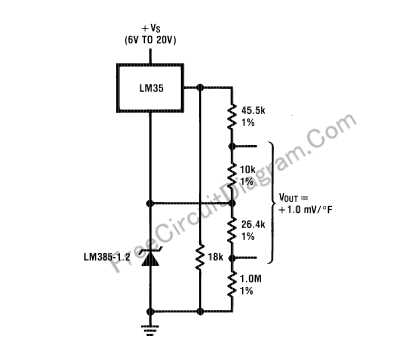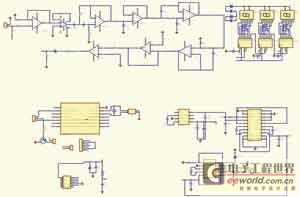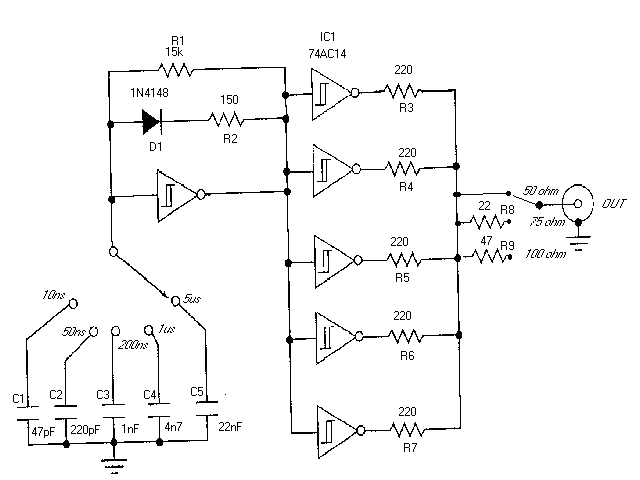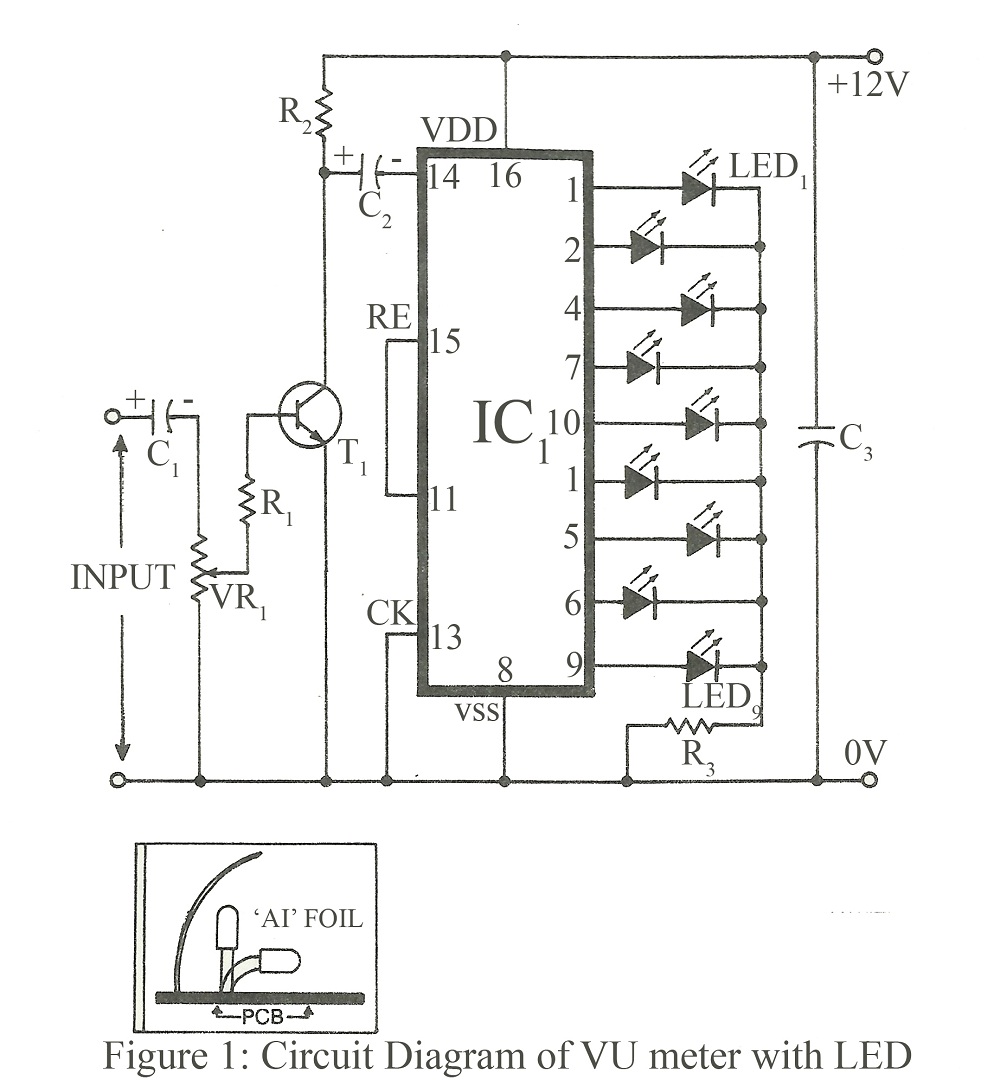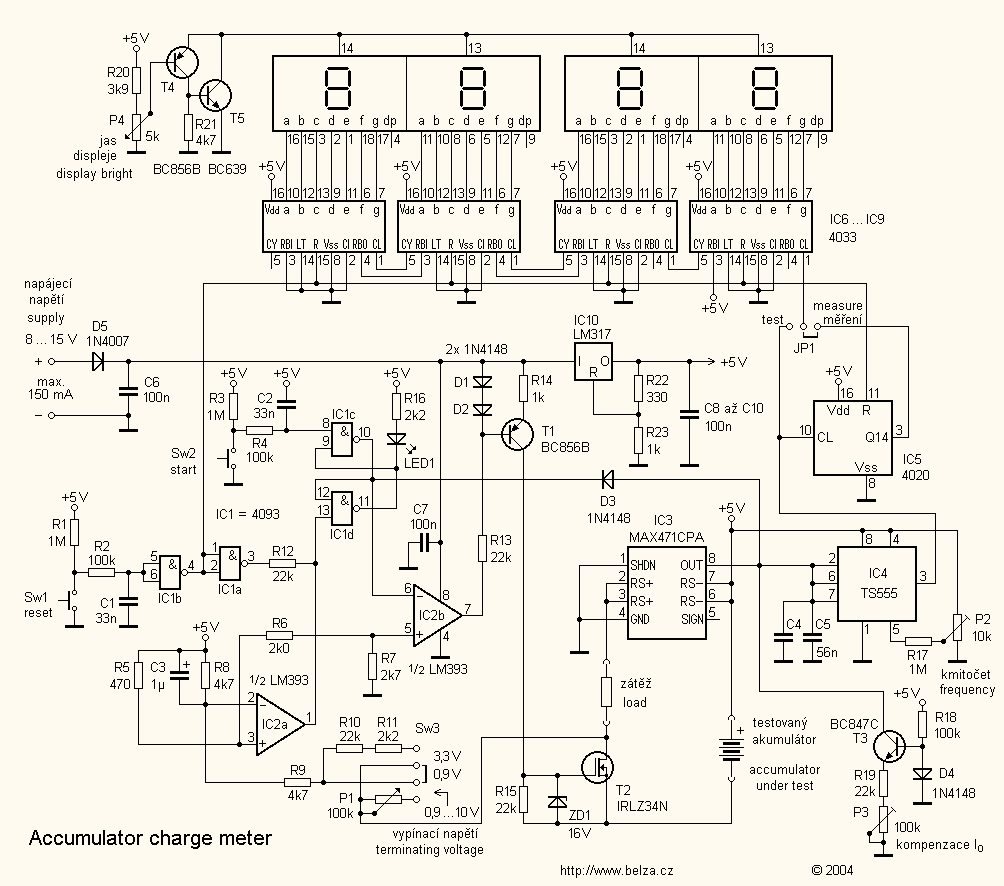
RF field strength meter

A simple Field Strength Meter consists of a small antenna, a detector diode, a resistor, a capacitor, and a micro ammeter. This circuit is sensitive enough to detect HF fields when positioned close to the transmitting antenna. The circuit functioned effectively, and an intermittent issue was diagnosed and resolved, which was due to a damaged antenna cable causing intermittent connections. The meter displayed a noticeable drop in field strength when the cable was moved. This led to a technical exploration of improving the circuit's sensitivity and determining its operational frequency range. The objective was to assess whether it could function at higher frequencies, such as 2.4 GHz, to monitor RF fields from Wi-Fi routers and mobile phones. The idea of building a wide-range RF amplifier was temporarily set aside in favor of amplifying the DC signal post-RF detection. Consequently, a straightforward instrument was developed that can detect the activity of Wi-Fi routers, mobile phones, and various RF transmitters across a broad frequency range. The circuit is powered by a 9 V battery. The diode, a critical component, should possess a low threshold voltage; a germanium diode (1N60) was utilized in this circuit, which remains available on the market. The diode and a 1 nF capacitor are soldered directly to the base of the antenna connector. In future iterations of this circuit, a 100 kΩ resistor would also be included at this location. The antenna must be cut to the appropriate wavelengths for the frequency range being measured; in this case, it was approximately 3 cm long (1/4 wavelength at 2.4 GHz). A 50 Ω resistor (or a close alternative, such as 47 Ω) was soldered at the base of the antenna for impedance matching. This simple RF Field Strength Meter exceeded expectations, responding effectively to Wi-Fi router and mobile phone transmissions. It can also be used to detect leaks from microwave ovens, although caution is advised, as the signals can be quite strong. The project can be constructed using components readily available in personal collections. A Vu-Meter from a discarded amplifier was repurposed as the indicator, with scale accuracy being less critical since measurements are comparative. The operational amplifier can be any common type, as the circuit only amplifies DC signals.
This Field Strength Meter circuit operates on the principle of RF signal detection and conversion into a readable DC output. The small antenna is designed to capture electromagnetic waves within the desired frequency range, specifically tuned to 2.4 GHz for Wi-Fi applications. The germanium diode (1N60) serves as the detector, converting the RF signal into a DC voltage. The low threshold voltage of the diode ensures that even weak signals can be detected effectively.
The capacitor (1 nF) works in conjunction with the diode to filter out high-frequency noise, allowing for a smoother DC signal to be amplified. The 100 kΩ resistor, which is planned for future inclusion, will help set the gain of the circuit and improve the overall sensitivity. The use of a Vu-Meter as an indicator provides a clear visual representation of the detected RF activity, making it easier to observe fluctuations in signal strength.
The circuit's power supply, a 9 V battery, ensures adequate voltage for operation while maintaining portability. The careful design of the antenna, including the impedance matching resistor, is crucial for optimizing performance and ensuring accurate readings across the intended frequency range. The versatility of this circuit allows it to serve multiple purposes, from monitoring Wi-Fi activity to detecting potential microwave leakage, making it a valuable tool for both hobbyists and professionals in the field of electronics.A very simple Field Strength Meter composed of a small antenna, a detector diode, a resistor, capacitor and a Micro Ammeter. Assuming that this simple circuit would be sensitive enough to detect the HF field, providing we keep it close enough to the transmitting antenna.
This worked quite well, and the intermittent problem was easily diagnosed and fixed; it was caused by a broken antenna cable, making intermittent contacts. With the meter we were able to see a clear drop of the field strength when moving the cable. From there, the technical curiosity took over; what if we could improve the circuit, making it more sensitive and, how high in frequency it would still work Would it work for much higher frequencies such as 2. 4 GHz, to check RF fields from Wi-Fi routers and mobile phones I gave up (at least temporarily!) to the idea of building a wide range RF amplifier to amplify the antenna signal over that wide range of frequencies.
This might be another project for another rainy Sunday (or many more rainy Sundays!). Instead, I preferred trying to amplifying the DC signal after the RF detection and see how far we can go. And here we go; we have a very simple instrument that can detect the activity of your Wi-Fi router, your mobile phone and about any RF transmitter through a wide range of frequencies.
It is powered by a 9 V battery. The diode is a critical component; it should have a low threshold voltage. The diode used in this circuit is a germanium diode 1N60. A ghost from the past, but it is still available on the market (Escol for example). The diode and the 1 nF capacitor are soldered directly at the base of the antenna connector. In the next version of this circuit I would put the 100 K resistor there as well. Another critical point is the antenna. It should be cut to wavelengths for the frequency range you want to measure. In this project the antenna was cut to around 3cm length (1/4 wavelength at 2. 4 GHz). I soldered a 50 Ohm resistor at the base of the antenna for matching the impedance (Well a 47 Ohm was close enough!). This simple RF Field Strength Meter proved to be much more effective than expected. It will react to your Wi-Fi router and mobile phone transmitting activities. You can also check the leaks of your microwave hoven, but be careful, put the sensitivity button to a very low position as the signal proved to be very strong!
I guess this is normal This project can be built with components we have in our drawers. Who want to go out buying components on a rainy Sunday I used a Vu-Meter from a scrapped amplifier for the indicator. The scale is not important as the measurements are comparative anyway. Those Vu-Meters are quite sensitive. The OP Amp can be any one of the common type as we amplify DC only. I used one fond in a drawer 🔗 External reference
This Field Strength Meter circuit operates on the principle of RF signal detection and conversion into a readable DC output. The small antenna is designed to capture electromagnetic waves within the desired frequency range, specifically tuned to 2.4 GHz for Wi-Fi applications. The germanium diode (1N60) serves as the detector, converting the RF signal into a DC voltage. The low threshold voltage of the diode ensures that even weak signals can be detected effectively.
The capacitor (1 nF) works in conjunction with the diode to filter out high-frequency noise, allowing for a smoother DC signal to be amplified. The 100 kΩ resistor, which is planned for future inclusion, will help set the gain of the circuit and improve the overall sensitivity. The use of a Vu-Meter as an indicator provides a clear visual representation of the detected RF activity, making it easier to observe fluctuations in signal strength.
The circuit's power supply, a 9 V battery, ensures adequate voltage for operation while maintaining portability. The careful design of the antenna, including the impedance matching resistor, is crucial for optimizing performance and ensuring accurate readings across the intended frequency range. The versatility of this circuit allows it to serve multiple purposes, from monitoring Wi-Fi activity to detecting potential microwave leakage, making it a valuable tool for both hobbyists and professionals in the field of electronics.A very simple Field Strength Meter composed of a small antenna, a detector diode, a resistor, capacitor and a Micro Ammeter. Assuming that this simple circuit would be sensitive enough to detect the HF field, providing we keep it close enough to the transmitting antenna.
This worked quite well, and the intermittent problem was easily diagnosed and fixed; it was caused by a broken antenna cable, making intermittent contacts. With the meter we were able to see a clear drop of the field strength when moving the cable. From there, the technical curiosity took over; what if we could improve the circuit, making it more sensitive and, how high in frequency it would still work Would it work for much higher frequencies such as 2. 4 GHz, to check RF fields from Wi-Fi routers and mobile phones I gave up (at least temporarily!) to the idea of building a wide range RF amplifier to amplify the antenna signal over that wide range of frequencies.
This might be another project for another rainy Sunday (or many more rainy Sundays!). Instead, I preferred trying to amplifying the DC signal after the RF detection and see how far we can go. And here we go; we have a very simple instrument that can detect the activity of your Wi-Fi router, your mobile phone and about any RF transmitter through a wide range of frequencies.
It is powered by a 9 V battery. The diode is a critical component; it should have a low threshold voltage. The diode used in this circuit is a germanium diode 1N60. A ghost from the past, but it is still available on the market (Escol for example). The diode and the 1 nF capacitor are soldered directly at the base of the antenna connector. In the next version of this circuit I would put the 100 K resistor there as well. Another critical point is the antenna. It should be cut to wavelengths for the frequency range you want to measure. In this project the antenna was cut to around 3cm length (1/4 wavelength at 2. 4 GHz). I soldered a 50 Ohm resistor at the base of the antenna for matching the impedance (Well a 47 Ohm was close enough!). This simple RF Field Strength Meter proved to be much more effective than expected. It will react to your Wi-Fi router and mobile phone transmitting activities. You can also check the leaks of your microwave hoven, but be careful, put the sensitivity button to a very low position as the signal proved to be very strong!
I guess this is normal This project can be built with components we have in our drawers. Who want to go out buying components on a rainy Sunday I used a Vu-Meter from a scrapped amplifier for the indicator. The scale is not important as the measurements are comparative anyway. Those Vu-Meters are quite sensitive. The OP Amp can be any one of the common type as we amplify DC only. I used one fond in a drawer 🔗 External reference
